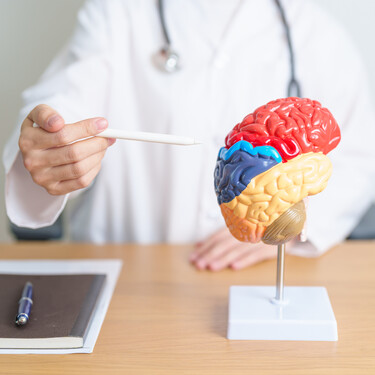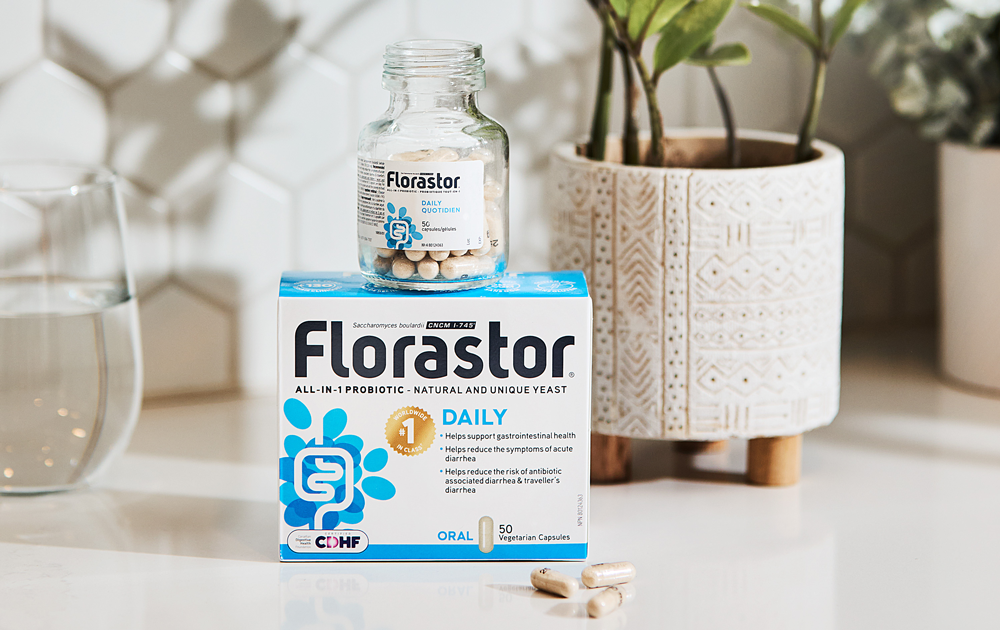The gut-brain axis is a scientific term used to describe the fact that the function of the human brain and central nervous system are deeply connected with the function of the gastrointestinal tract and particularly the gut microbiome.
This connection is brought to life in different ways, including through the vagus nerve which connects these two systems but also through the different types of messenger compounds created by your gut bacteria known as SCFAs – we’ll talk more about those soon.
While there is a lot of science and complexity to be found in this area, the goal of today’s article to try distill it all down so that you can leave with a better understanding of what the gut-brain axis means to you and your long-term health.
Let’s start today’s exploration by defining what it means for the gut-brain axis to be considered bi-directional.
Gut-brain communication is bi-directional
Bi-directional essentially means that “it goes both ways”.
Your brain is capable of sending messages to your gut, and your gut is capable of sending messages to your brain.
In daily life we experience this bi-directional communication regularly and often without knowing it.
Simple things like the feeling of fullness after a meal or the sensation of stomach discomfort some of us get during periods of stress are great examples of either side of this bi-directional communication.
But how are these messages regulated?
Your gut microbiome has a big role to play.
Microbiome messengers – diversity vs dysbiosis
This is where it gets interesting. Before we get started, let’s define two very important concepts related to the gut microbiome.
Microbiome Diversity:
Just like it sounds, microbiome diversity refers to the amount of unique species of healthy gut bacteria one has in their digestive tract. Microbiome diversity is a good thing and a diverse microbiome is considered a healthy microbiome.
Dysbiosis:
Dysbiosis refers to a gut microbiome that has reduced diversity, less unique healthy bacteria and potentially more harmful gut bacteria.
A dysbiotic gut microbiome does not function as well, is more likely to create inflammatory compounds which can compromise gut-brain communication and the health of the brain.Inflammation of the brain cells, known as neuroinflammation, is increasingly considered a big risk factor for several mental health conditions.This is exactly why scientists tend to notice that dysbiosis is a common feature of brain and central nervous system-related conditions including depression, anxiety, stress, multiple sclerosis as well as both Alzheimer’s and Parkinson’s disease.Although these are complex conditions and go beyond just the microbiome, it seems increasingly likely that our gut bacteria can have either a helpful or hurtful role to play – depending on if we are in a state of diversity or dysbiosis.It’s not all doom and gloom though!
A healthy, diverse microbiome, on the other hand, produces large amounts of anti-inflammatory compounds known as SCFAs (short-chain fatty acids) which scientists believe travel from the digestive tract to the brain where they enhance the health and function of neurons (brain cells).
Numerous studies have demonstrated that people with a more diverse gut microbiome usually demonstrate better cognitive health and do better on tastes of memory and learning.
Other benefits of SCFAs include:
· Appetite regulation (through the gut-brain axis!)
· Improved blood sugar control
· Improved nutrient absorption
· Improved gut and immune health function, including fighting against bad bacteria
Short-chain fatty acids are a great example of the fact that, when we take care of our gut-brain communication, we are really taking care of our body as a whole.
But the story isn’t over yet.
Maintaining good gut-brain communication
So far we’ve established that good-gut brain communication relies heavily on a diverse microbiome and the production by the microbiome of SCFAs.
But can we do from the diet and lifestyle perspective to ensure these systems are operating smoothly?
Here are the top tips I give my clients:
· Aim for at least 7 hours of sleep per night
· Incorporate fermented foods like kimchi, kefir, yogurt, kombucha and sauerkraut
· Eat plenty of known prebiotic-rich foods like legumes, asparagus, oats, whole wheat, apples, bananas and onions.*
· Eat plenty of potentially prebiotic-rich foods like fatty fish, dark chocolate, green tea, seasonings and various types of nuts, seeds and colourful fruit like berries.
*Prebiotic is a term used to describe foods that are thought to act as “food” for our gut bacteria, which they use to turn into those beneficial short chain fatty acids we’ve been talking about.
In certain cases, we have to look beyond our diet and lifestyle to take the necessary steps to maintain our gut microbiome.
That’s where probiotics like Florastor come into play, so let’s close today’s discussion by reviewing Florastor’s role in maintaining a healthy gut microbiome.
Final thoughts
The human gut microbiome usually is shaped over time, but sometimes its structure can be affected acutely – this is particularly true when are prescribed antibiotic medication. Antibiotics are very effective at eliminating bad bacteria, but they are known to eliminate good bacteria too which can have long-term consequences for diversity of your gut microbiome. This process is sometimes referred to as “antibiotic-induced gut dysbiosis” – which hopefully makes more sense after reading today’s article.
The good news?
When used in conjunction with antibiotics, Florastor has been demonstrated to reduce the extent to which these medications affect the gut microbiome while also supporting the regeneration of the microbiome after dysbiosis. By helping to restore the levels of healthy gut bacteria, Florastor in turn helps to restore the production short chain fatty acids which are essential to optimal gut-brain communication as well as both gut and general health. Because the negative side effects of antibiotic use on the gut microbiome can add up over time, those who have had to use these medications regularly should pay extra attention to strategies like this and the dietary strategies discussed previously that contribute to a healthy, diverse microbiome.
The health of your brain, and of your body as a whole, will thank you for it.


.jpeg?sw=375&sfrm=png&q=90)


